Kershaw’s American Made OTF is Built with the Same Utilitarian Functionality That made this Brand a Staple in the Industry.
Key Takeaways
- Hands down the best OTF auto under $300.
- Innovative safety solutions.
- Built like a small tank.
My thumb is tired. Thankfully, I type mostly with my fingers, which will make this review of the Kershaw Livewire a bit easier. I’ve been walking around the house now, for days, snapping the blade open and closed, open and closed. The fidget-factor is high with the Livewire, and the spring on the action is a workout for your thumb if, like me, you can’t put it down.
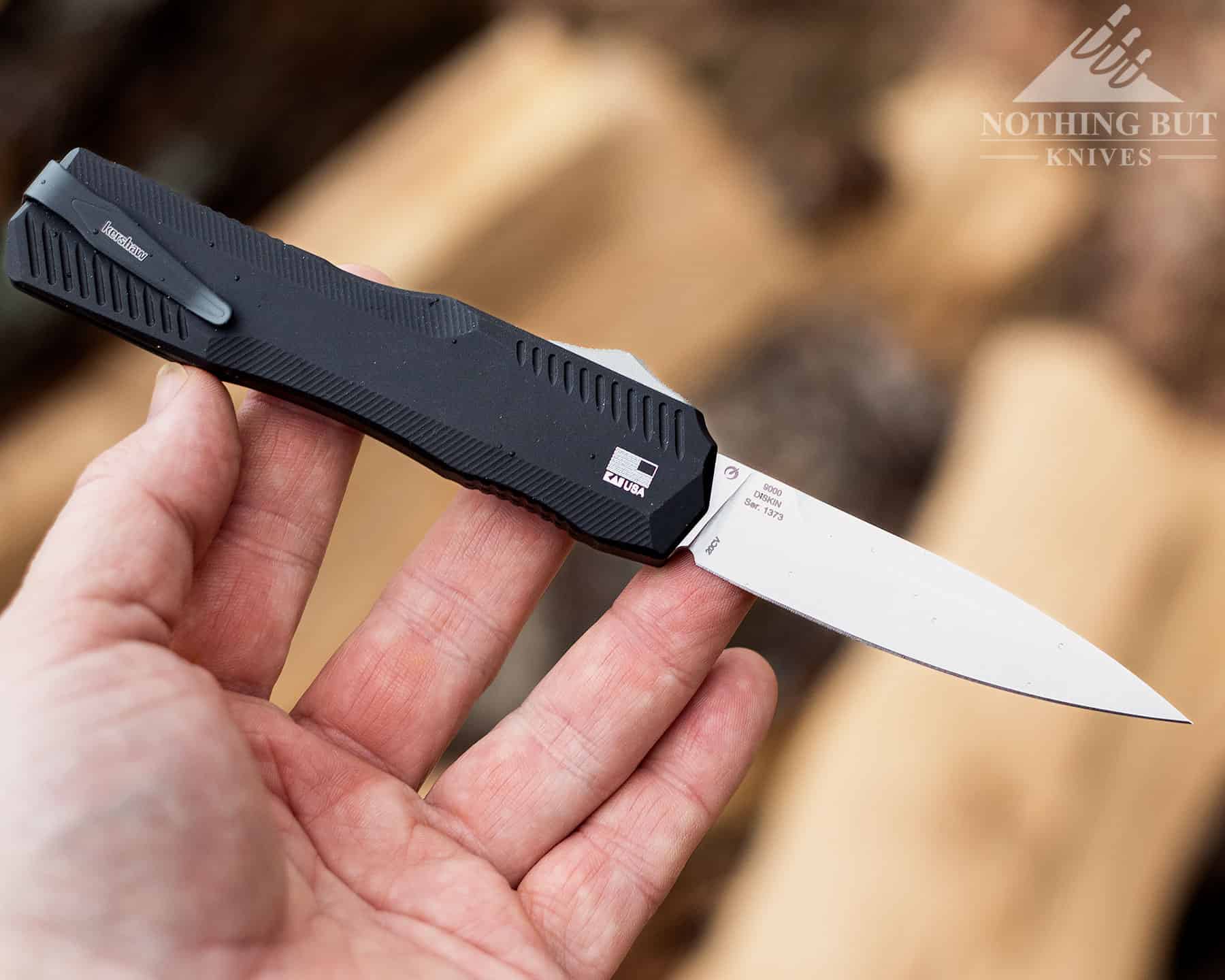
Livewire implies that the Kershaw is dangerous. In a more euphemistic way, Livewire has come to mean someone who’s easily excited. And in both ways, the name is fitting. This knife—like many out-the-front blades—carries with it the same kind of edgy and intimidating speed that has made switchblades and automatic knives so appealing.
On the practical side, though, Kershaw has built a tool that—while it could be dangerous—has some intentional safety devices built in to prevent accidents. And from the aluminum handle to the stonewashed CPM 20CV blade, this Kershaw is built with the same utilitarian functionality that has made this brand a staple for over the last 30 years.
Specifications
| Blade Length: | 3.3 in. (8.4 cm) |
| Blade Type: | Straight Back, Flat Grind |
| Blade Steel: | CPM 20CV |
| Blade Finish: | Stonewashed finish |
| Blade Thickness: | 0.125 in. (3.2 mm) |
| Overall Length: | 8.1 in. (20.6 cm) |
| Weight: | 3 oz. (85 g) |
| Closed Length: | 4.8 in. (12.2 cm) |
| Handle: | Black anodized 6061-T6 aluminum |
| Pocket Clip: | Ambidextrous Tip Down |
| Lock Type: | Internal Lock |
| Handle Thickness: | 0.48 in. (12.2 mm) |
Pros
| The grip surfaces |
| A heavy trigger for deployment |
| Kershaw has built a beast of an OTF in a thin package |
Cons
| Only available in one finish option |
| The clip is small and tight |
The Livewire
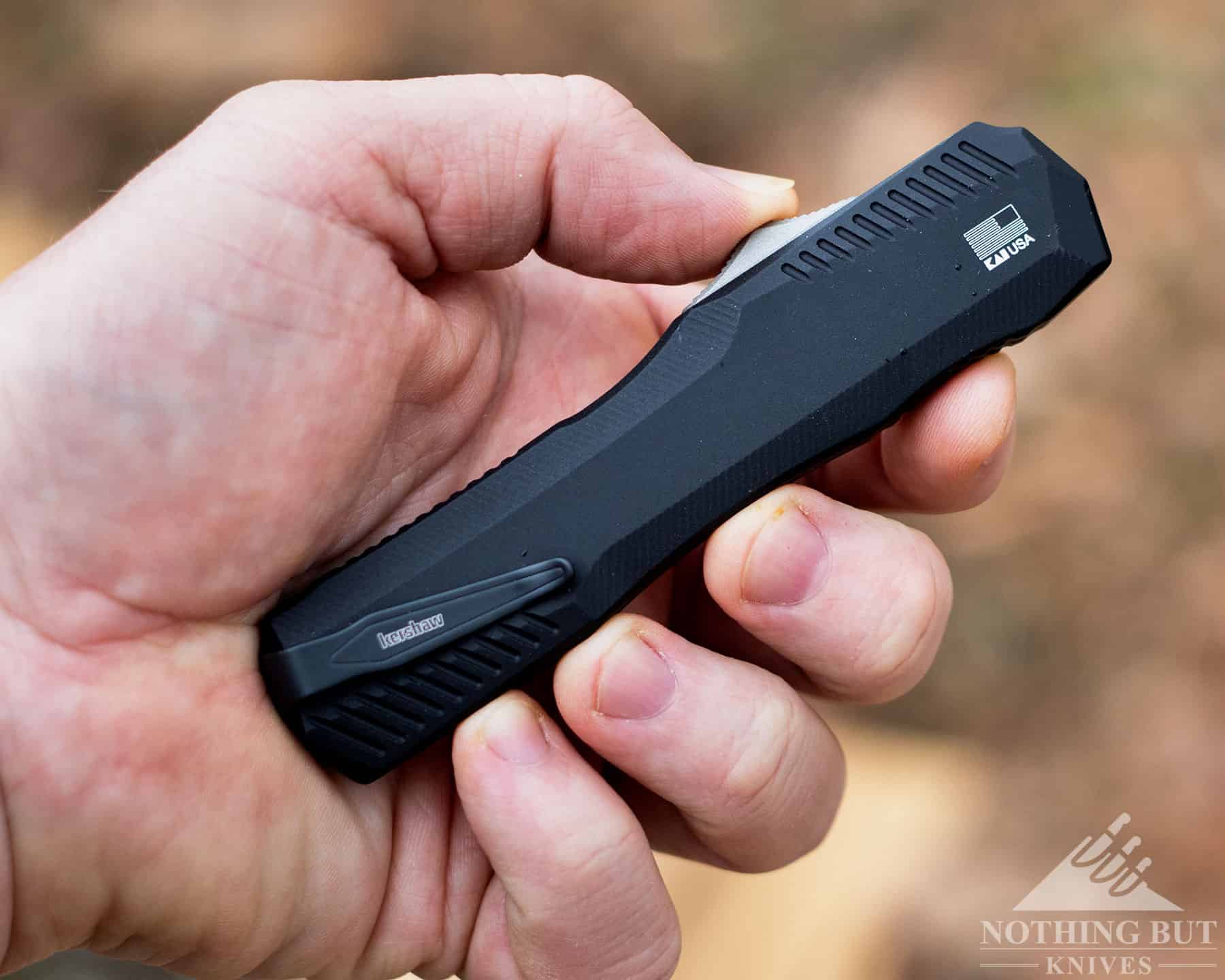
This design will seem familiar to OTF devotees. While some of Kershaw’s designs have a distinctive aesthetic that marks them as Kershaws, the Livewire is less distinctive in its outward appearance.
On the other hand, there are other aspects of the knife that are recognizable. Kershaw does aluminum well. We’ll get into the handle in a moment. The steel, too, will be familiar to those who have other Kershaws. The stone washed CPM 20CV protects the blade from showing excessive wear.
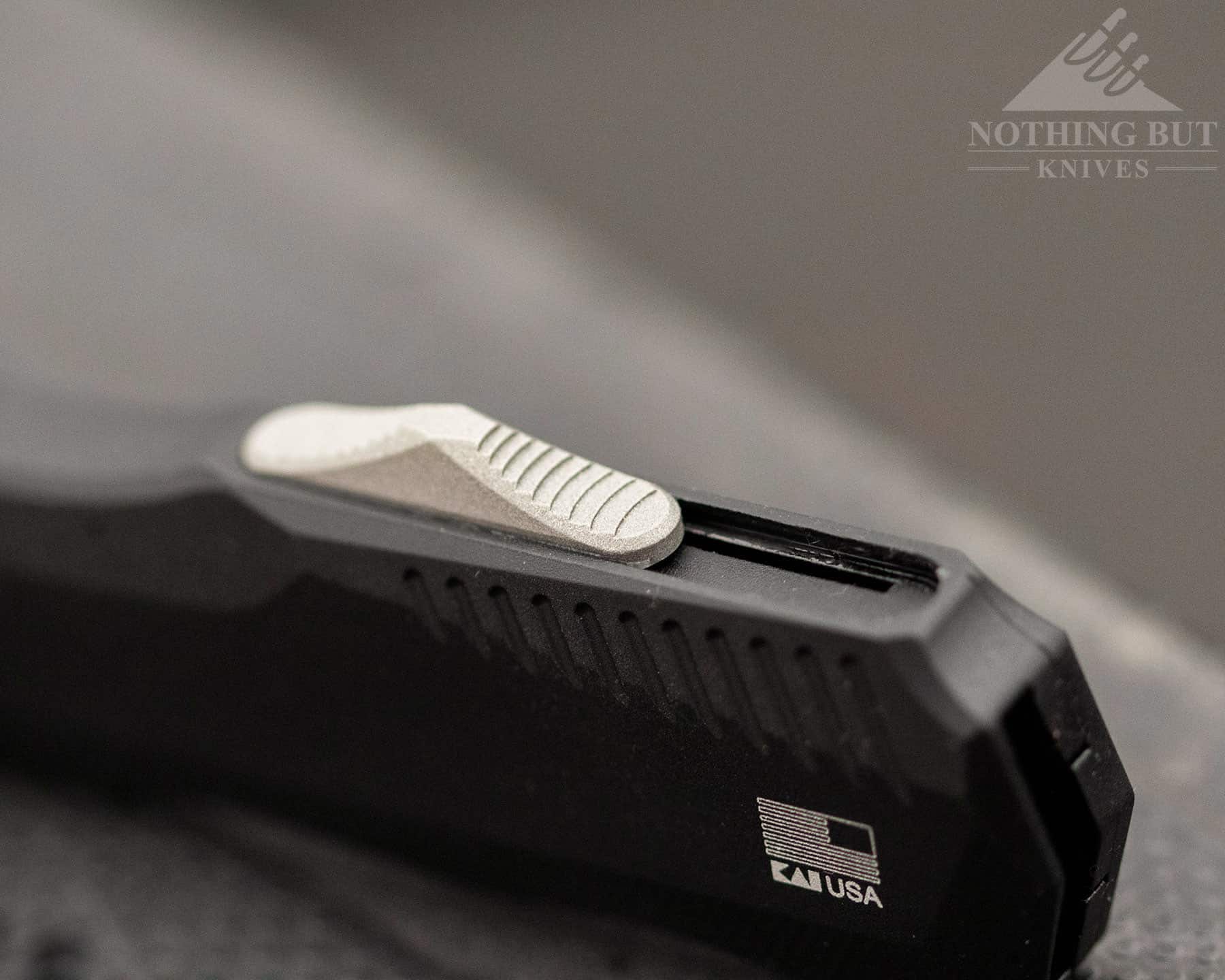
This isn’t meant to be a safe queen. The Livewire is built like a small tank. When you click open the action, the blade slaps open with force. You can feel the impact in your hand on both the opening and the closing motions.
When open, like all OTF knives (except those by Hawk Knife Designs), there’s a minute amount of blade play. If you carry an OTF, it is something you accept. Here, though, it is minimal. If you were to compare this, as I have, to some of the knives in the sub-$100 price range, you’ll find the Livewire is both faster and tighter.
The handle’s contours
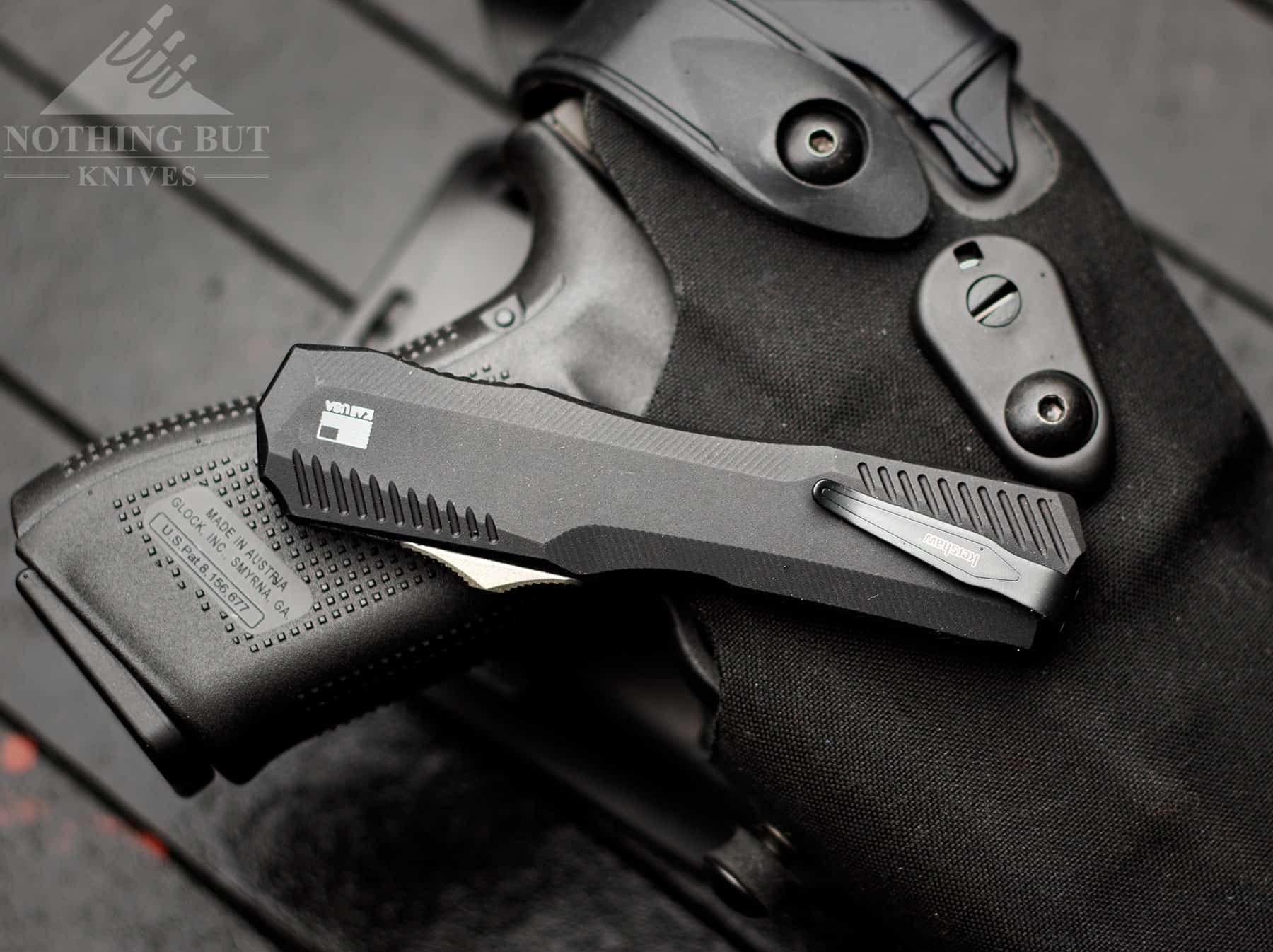
The handle is almost half-an-inch thick. This gives a solid bit of mass for ergonomics and allows enough real estate inside the handle for Kershaw to secure some serious springs. The clip provides an anchor point, or more of an index point, as the clip hits the palm when the switch is positioned under your thumb (for right-handers, as it comes set up).
On the sides, there’s a slight hourglass shape that allows your fingers to fall in place. These angles are subtle, yet highly effective. This is a snappy knife and a solid finger placement makes for a much more secure grip during the opening and closing movements.
The serrations
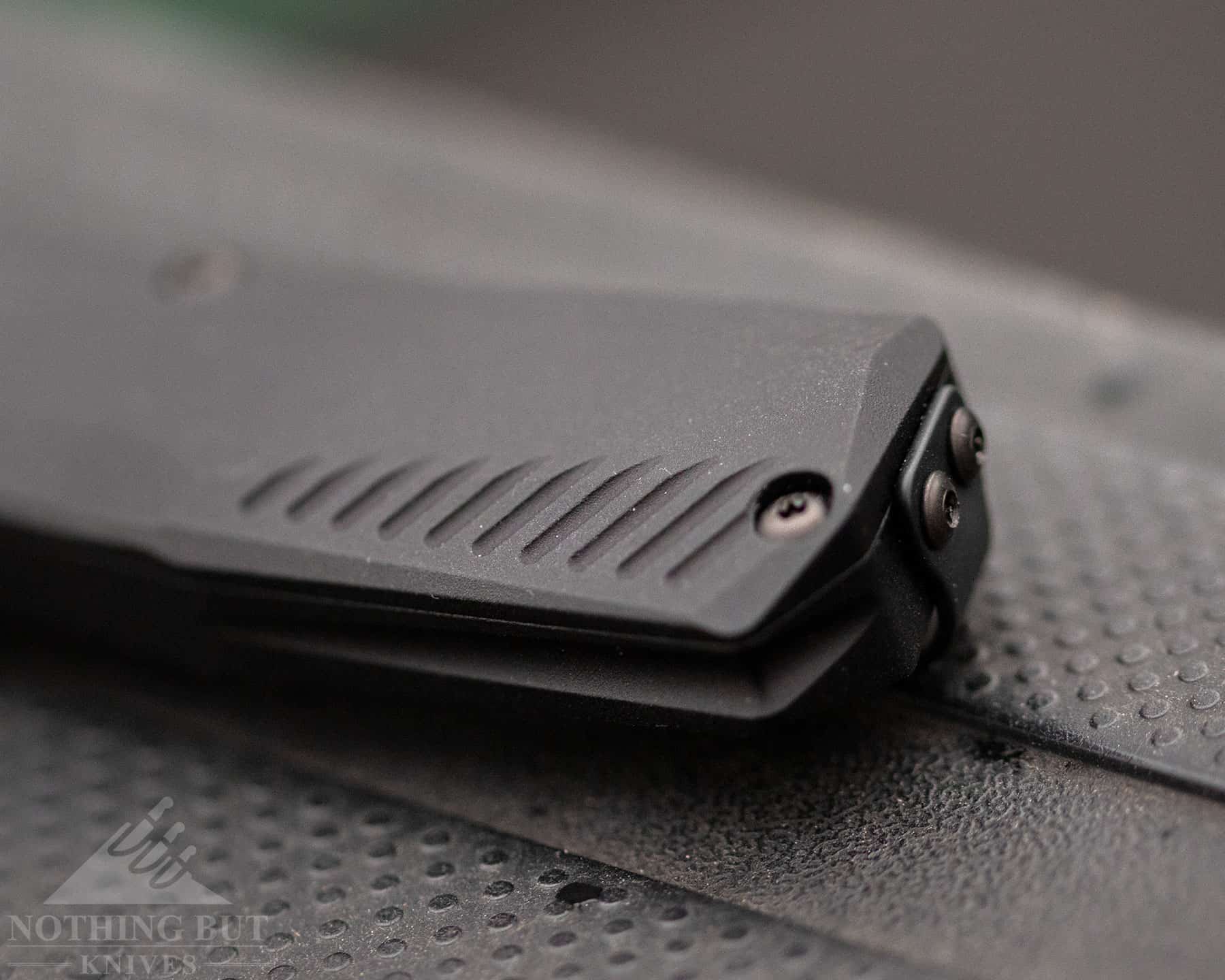
The anodized aluminum has a bit of tooth. It is a fine texture, not slick. Alone, though, it isn’t enough to ensure solid control of the blade.
Serrations, though, help immensely. There are two depths on the wide part of the handle. One set is deep and well spaced apart. The second set is much more shallow.
While these are helpful for the opening and closing, they provide exceptional grip, too, during normal use. The Livewire isn’t a knife that fills the hand, so these extras are useful.
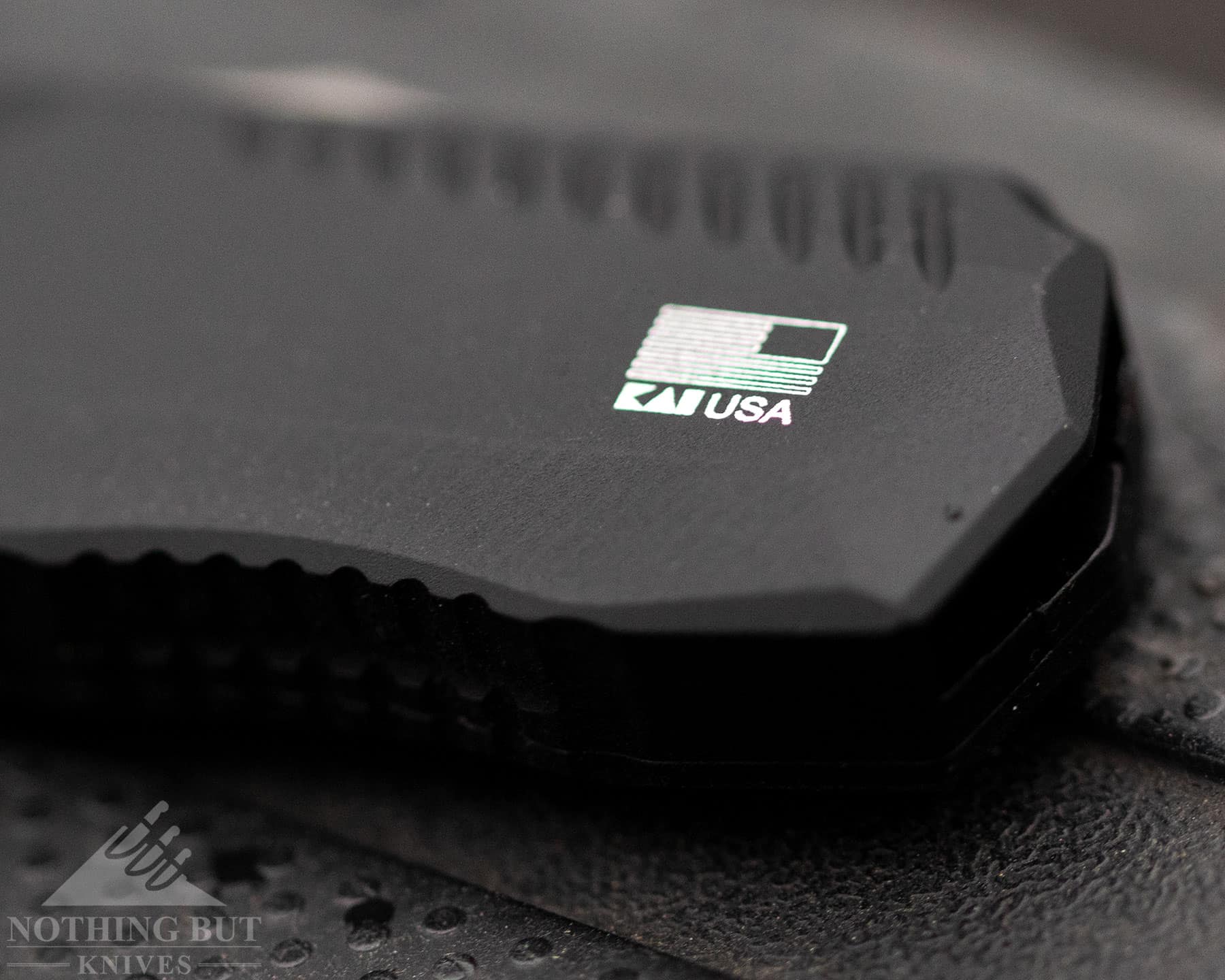
Kershaw has added the requisite jimping on the switch’s two faces. This switch is easy to feel and there’s no slipping as it travels up or back. There’s also a short section of jimping on the back of the handle in a concavity just deep enough for your index finger to anchor in.
The Livewire’s Blade
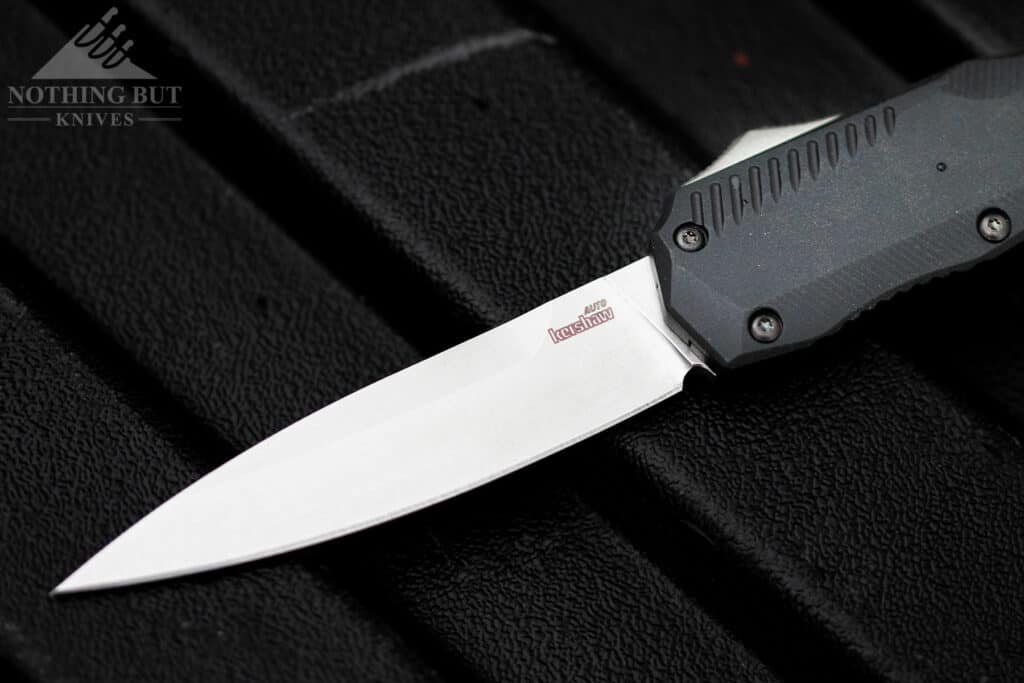
CPM 20CV is a martensitic stainless steel. The stainless capabilities come from the inclusion of chromium, and the steel’s renowned wear resistance comes from the inclusion of vanadium carbides.
This is a solid choice for an OTF—a blade type that is going to see a lot of wear as it travels in and out of the aluminum handle. As is the case with a lot of the designer powder-formed alloys, CPM 20CV adds some expense. It also adds some high expectations for performance.
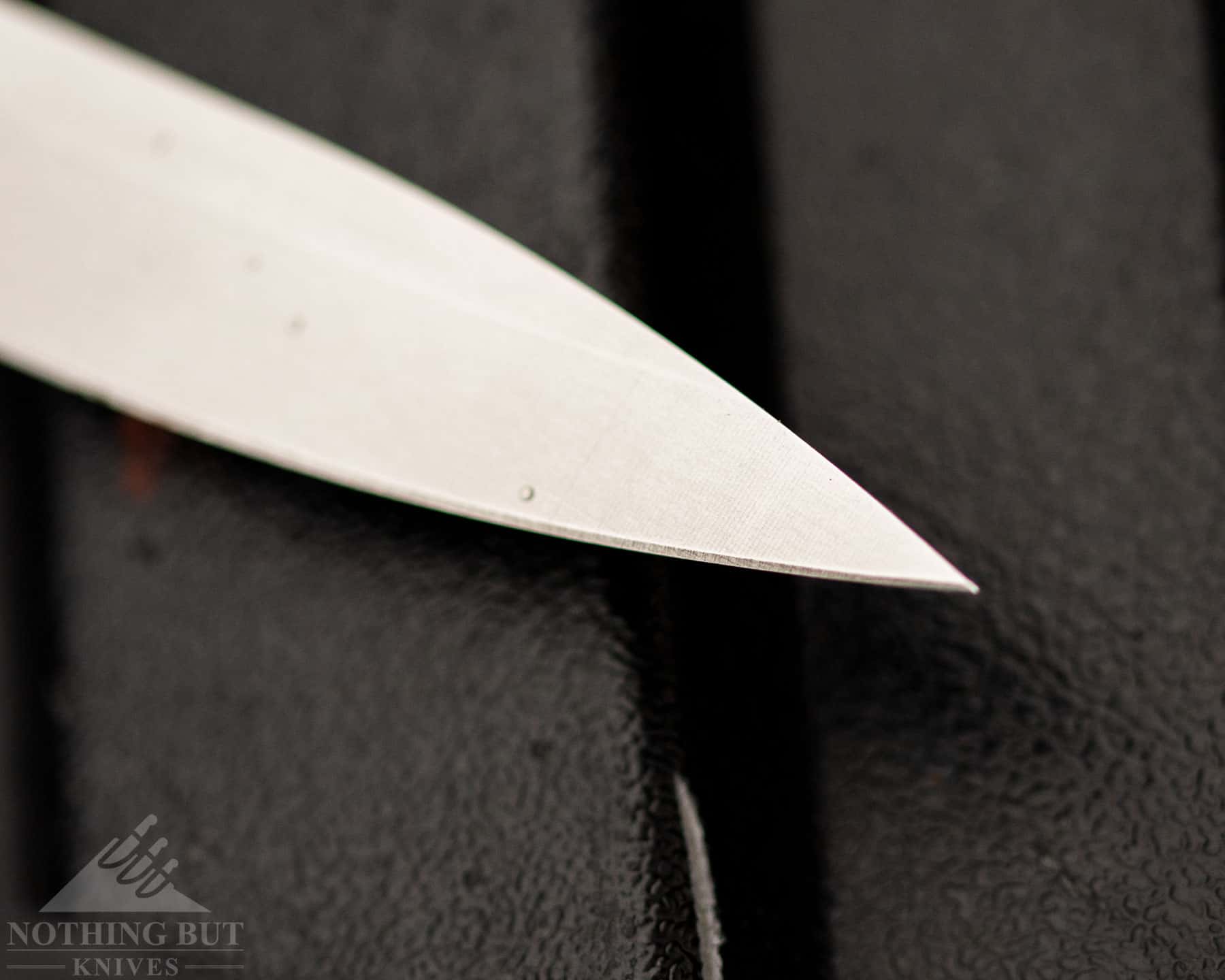
Few use OTF knives for the most mundane of EDC tasks, but this is a solid option for blade steel. Out of the box, the blade is exceptionally sharp, and the point is superb.
Again, we return to the stereotype of automatic knives. The one-handed speed of this knife, combined with the aggressive blade design, make this an ideal tool for self-defense.
Why is the Livewire’s clip so small?
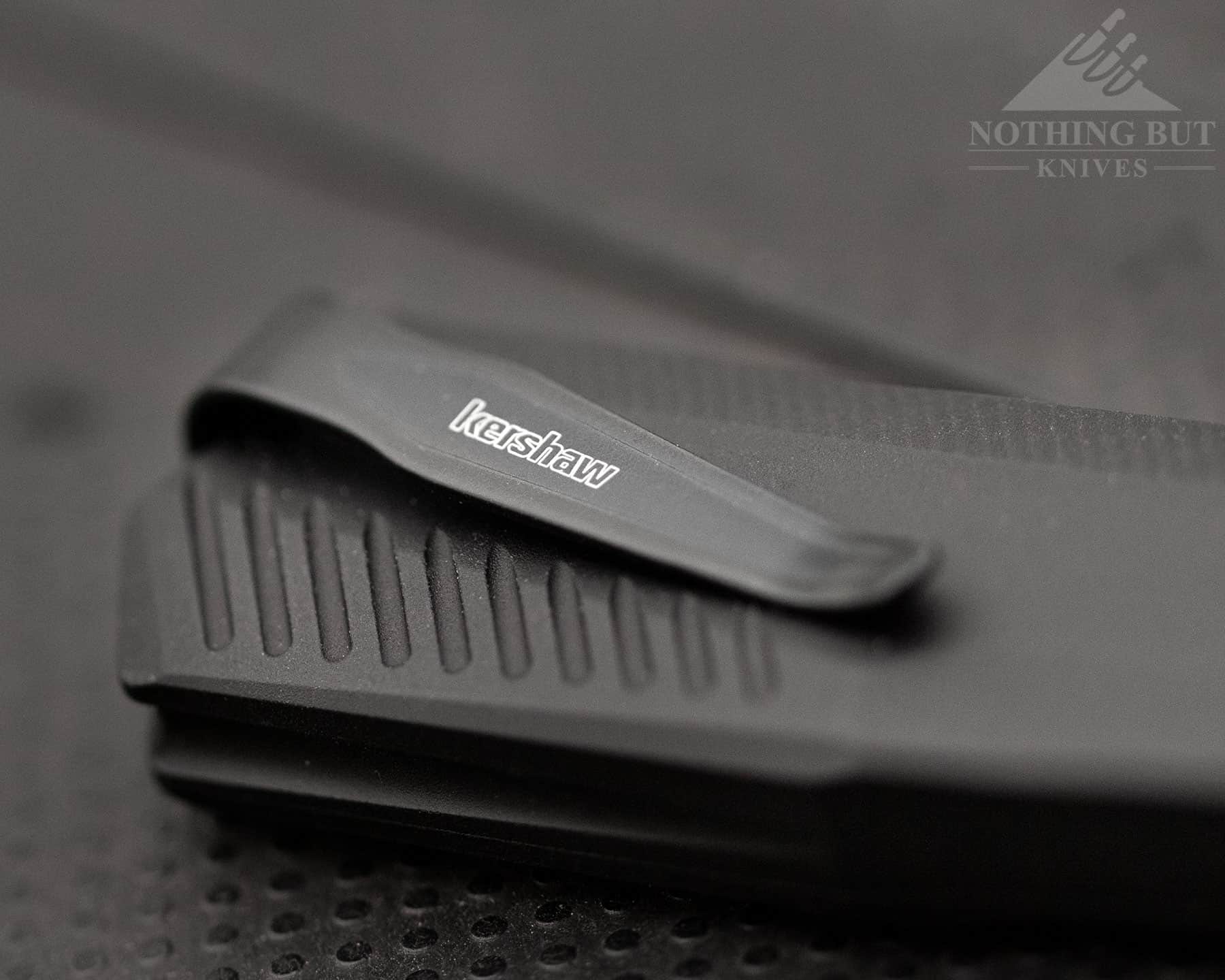
I’m not sure—though I suspect it is to prevent the knife from drawing extra attention to itself.
For one, the handle is thin. Thin handles often have thin clips. But this one looks somewhat like a pen. It is small enough that, with the deep-carry placement on the handle, it would all-but disappear in the pocket.
Also, it is at an odd angle. If the knife were to be vertical in the pocket, the clip would be angled over, maybe 15 degrees off of the vertical axis. As odd as this sounds, this would make it appear to be a much smaller knife (or something) in the pocket.
Why the need for obfuscation? I may be reading too much into the clip and its orientation, but I find it important and potentially useful. Automatic knives are far more common now than they used to be, but they are still a hot-button political issue for some and you should check your local knife laws, too.
If the potential for deception isn’t intentional and just part of the Livewire’s look, I’d be disappointed. This clip is small and very stiff. It will hold the knife securely, either way.
A new direction for Kershaw?
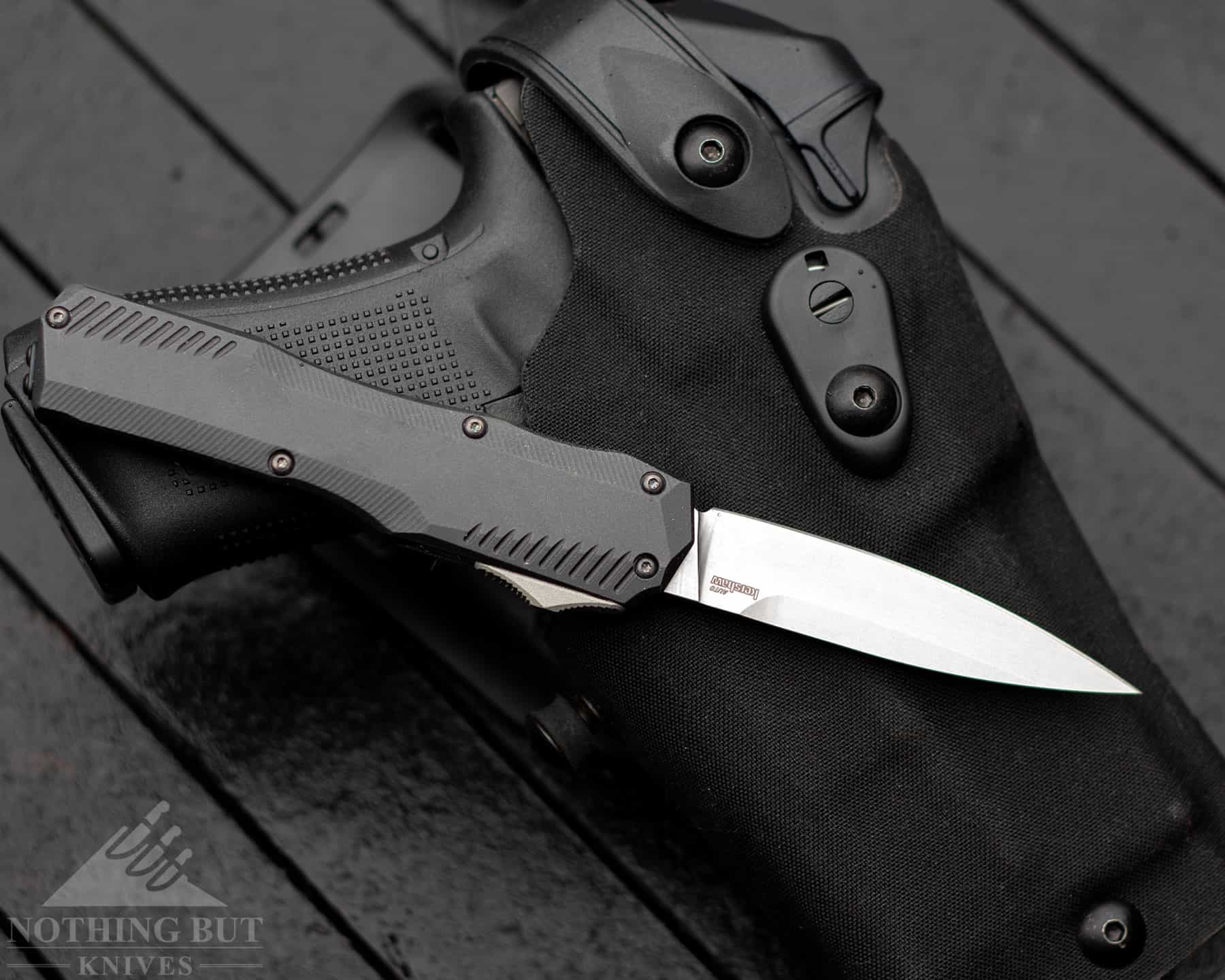
Other OTF Comparisons and Alternatives
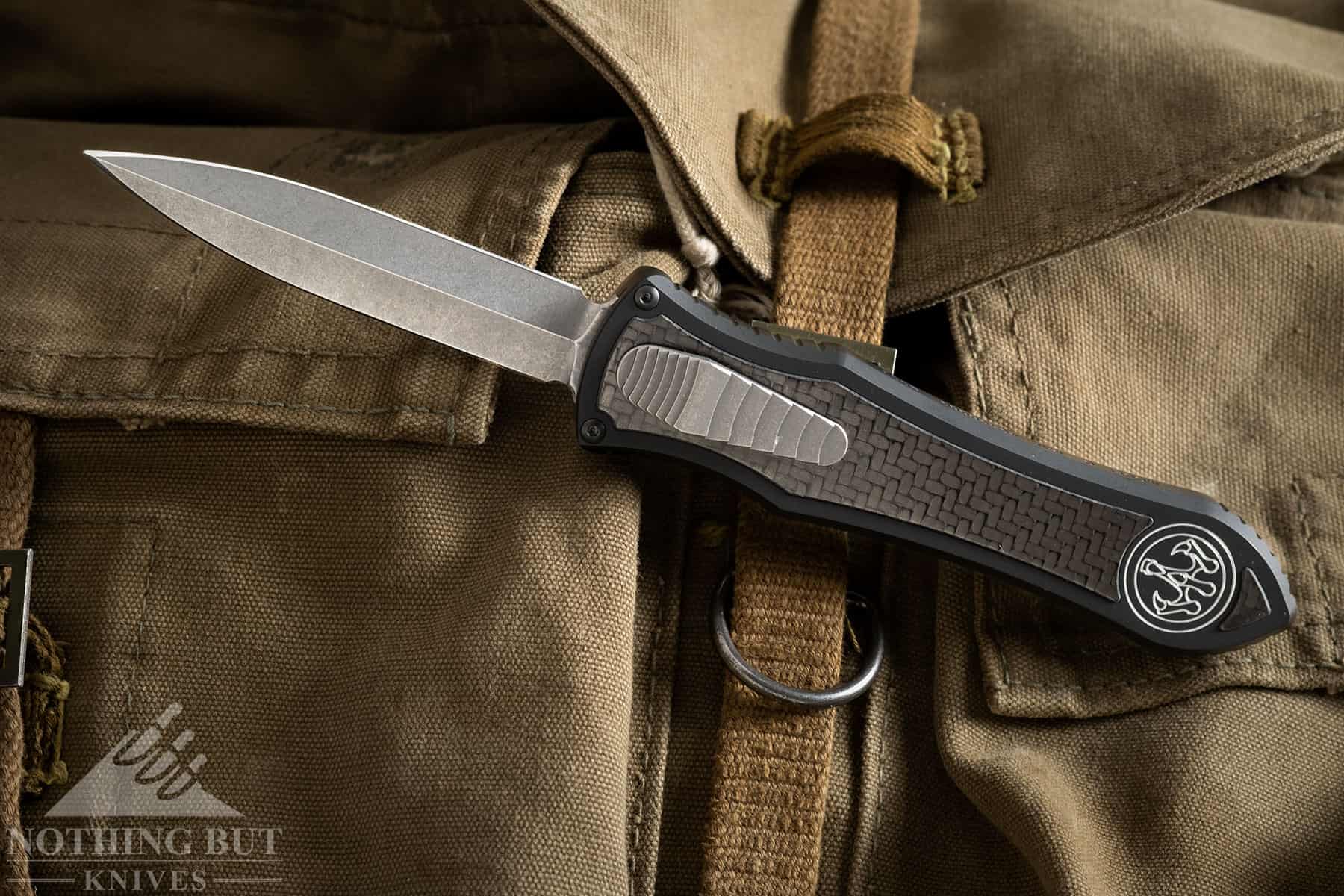
Kershaw Livewirere Vs Its Competitors
| Livewire Competitors | Blade Steel | Average Price |
| Kershaw Livewire | CPM 20CV | $240 |
| Benchmade Shootout | CPM-Cruwear | $350 |
| Hawk Designs Deadlock | CPM 20CV | $3,500 |
| Microtech Ultratech | Premium Steel (Microtech needs to release this info) | $350 |
| Boker Kalashnikov | D2 | $165 |
The OTF, as a class of automatic knife, has become somewhat ubiquitous. You can find cheap alternatives in most free-state truck stops. But the really good ones–that’s far more difficult.
If price is no concern, check out Hawk. These are the undisputed best of the best, and the blades lock up like a Cold Steel Lockback–no play at all. A limited edition of this knife made an appearance in John Wick 4.
For something closer to Kershaw in both brand and price, check out those from Microtech. The company was built on the OTF, and rule the production class for those serious about that robust blend of form and function that keeps Microtech on top. Check out the Ultratech.
Others are following suit. Benchmade’s Shootout #AD takes the handle in a more ergonomic direction.
Boker has added a Kalashnikov #AD to the line up–building a viable contender for daily carry in a design that won’t break the bank.
Keep it coming, Kershaw
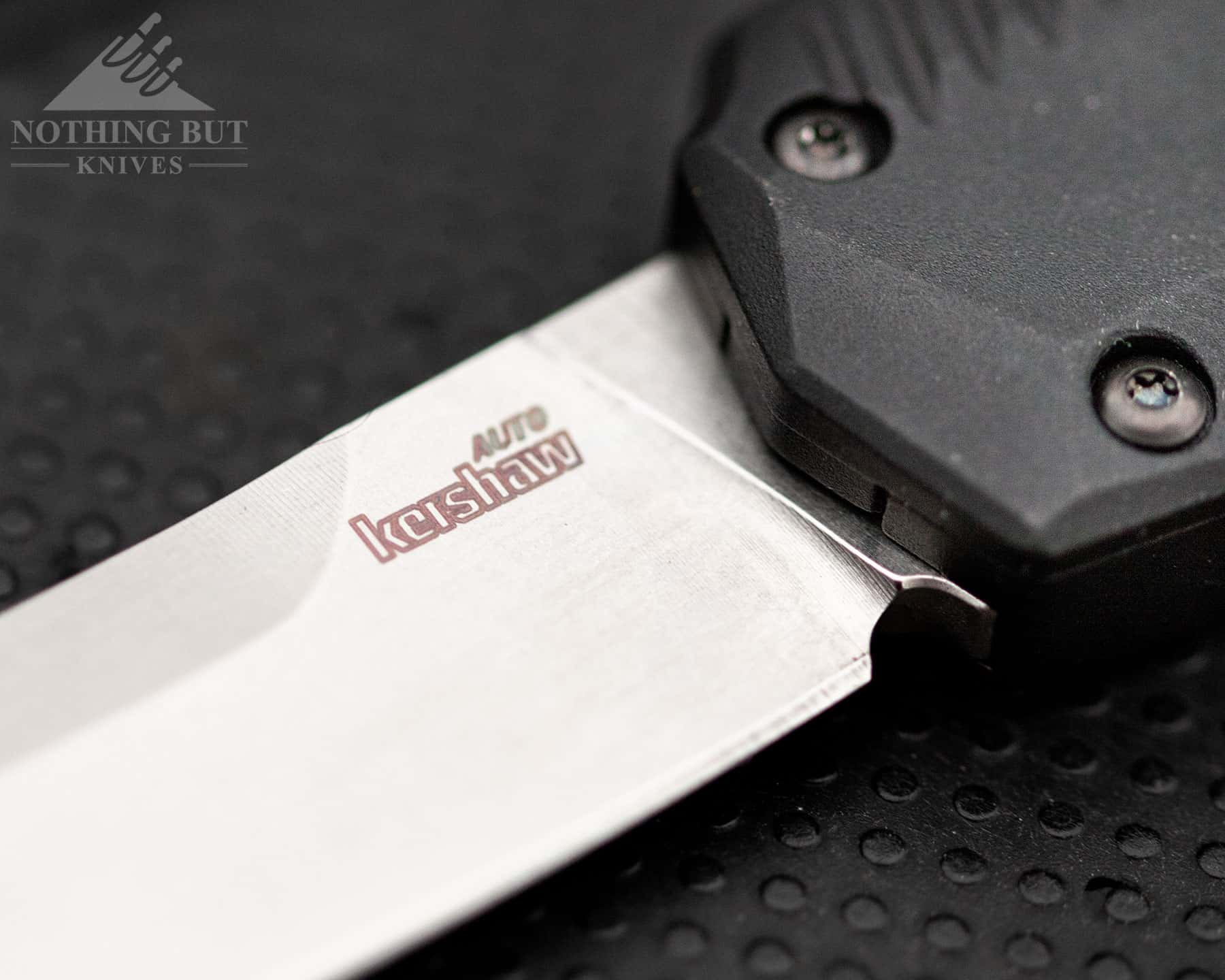
The Livewire is a fantastic addition to the Kershaw catalog. The company has always been a pioneer in assisted-opening devices, but they stayed on the assisted flipper side for decades. They’ve only recently made automatics and this marks a bold new move into the crowded realm of out-the-front knives.
Hopefully this is the start of a new family for Kershaw. As they’ve done with the Launch series, the Livewire might make a compelling line with different blade widths and lengths.

Going to get one. Especially since they’re made in the. USA. Just hope they don’t run a series or else I’m going to have to collect them all.
I’m really wishing the author would have compared it to Hogue’s OTFs.
Great knife in all aspects except clip is to small and tight. Won’t go over standard Jean pockets.